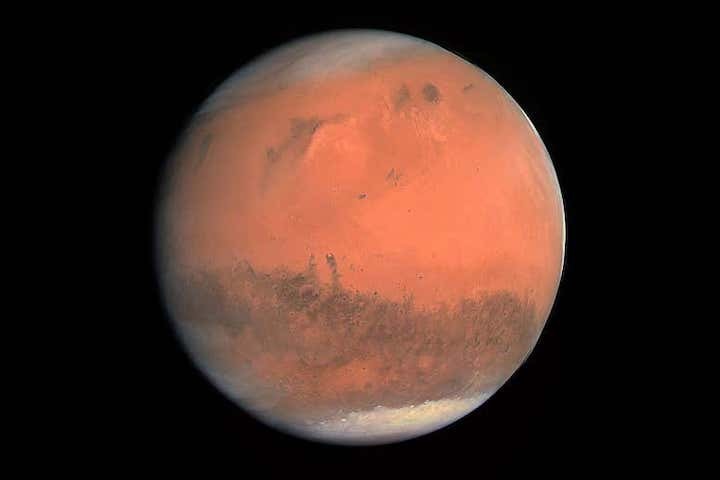13.02.2020

ESA & MPS for OSIRIS Team MPS/UPD/LAM/IAA/RSSD/INTA/UPM/DASP/IDA, CC BY-SA 3.0
Mars may have been a late bloomer. Evidence from Martian meteorites that landed on Earth have shown that Mars may have taken up to 15 million years longer to form than we thought.
When an asteroid or comet smashes into Mars, it blasts rocks up off the surface, and some of those rocks can end up in space and then land on Earth as meteorites. Studies of these have shown huge variations in their composition, particularly in the amounts of so-called “iron-loving” elements like tungsten, which tends to sink towards a young planet’s iron core as it is forming.
Tungsten is crucial to how we measure Mars’s age – we use its presence or absence in rocks to figure out when the planet formed. If it is present outside the core, this can be a signal that formation is rapid. Absence would suggest slower formation. Previous analyses of tungsten in Martian meteorites suggested the planet was built quickly, coalescing in less than five million years after the formation of the solar system.
But it is possible this tungsten was delivered to Mars by collisions with asteroids, which may mean the meteorite samples have led us astray. To find out, Simone Marchi at the Southwest Research Institute in Colorado and his colleagues used simulations of smash-ups with Mars to try to figure out exactly where the iron-loving elements in martian meteorites came from.
The simulations that resulted in a planet that would produce meteorites with the compositions we see involved collisions with one to three huge rocks, as large as a few per cent of Mars’s current mass. “Basically half of the planet is blasted away, and a large portion of the mantle would be melted or vaporised,” says Marchi.
As the young Mars reformed after each of these impacts, it would have incorporated elements, including tungsten, from the impactor in the areas closest to the collision, explaining the variations in composition that we see in meteorites. “Maybe those collisions really messed up our measurements,” says Marchi.
He says that future missions to return samples from Mars may help us figure out how and when it really formed. “If we had more rocks, we could definitely have a better understanding.”
Quelle: NewScientist
